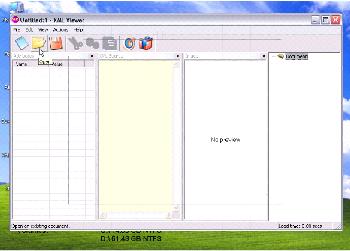

In the Settings/Preferences dialog ( Ctrl+Alt+S), go to Editor | Color Scheme | XML. You can configure XML-aware syntax highlighting according to your preferences and habits. If there are multiple choices, select the desired namespace from the list.ĭepending on the file type, IntelliJ IDEA creates a namespace declaration, or a taglib: Configure syntax highlighting If there are multiple choices, select the desired namespace from the list.Īlternatively, hover your mouse pointer over the problem and click Create namespace declaration in the popup that opens. To solve the problem, use the quick-fix that IntelliJ IDEA suggests. If you use a tag or an attribute from a namespace that is not bound, IntelliJ IDEA detects the problem and shows a tooltip:
#Implement html xml file viewer software
IntelliJ IDEA uses Xerces 2.11, an XML parser developed by Apache Software Foundation Group.
#Implement html xml file viewer code
The XML below is an example of a minimal session file.IntelliJ IDEA brings powerful support for XML that includes structure validation, formatting ( Ctrl+Alt+L) and indentation ( Ctrl+Alt+I according to the XML code style, importing unbound namespaces, viewing code structure, unwrapping and removing tags ( Ctrl+Shift+Delete), generating DTD files and schemas from instance documents, as well as syntax and error highlighting, code completion ( Ctrl+Space), intention actions ( Alt+Enter), quick documentation look-up ( Ctrl+Q), and more. : Defines the y axis for tracks when rendered as charts.īaseline= Line is drawn at this y value. WindowFunction= The function to be used when displaying data Visible= Whether the track is visible or has been filtered out. Renderer= The renderer used to display the data.

Id= A track identified used internally by IGV. Height= The default height for the panel.Ĭolor= The default color for the data in the track.Įxpand= Whether the track is initially expanded or not. Name= A panel identifier used internally by IGV. They are included in an XML file produce when you save a session in IGV, but are typically not included in an XML file that is created manually. Optional - These elements are optional in a session file and are used to determine the placement of tracks and visual style choices. Any '$$' in this string will be substituted with the name of the current feature. Url= Defines a URL for external links associated with a feature track. Path= The location of the data source (file path or URL). Name= The name of the track (single track files only). : Contains information about the data sources to be loaded, including data files, feature files, sample information files, and DAS servers. : An enclosing element for all Resource elements. Version= The session version (this must equal '3'). Locus= The initial genomic region to be viewed ( chromosome:start-end or gene name). Required - These elements are required in a session file. The XML format (IGV version 1.5) is described below. You can also create a session file manually. IGV produces a session file in XML format when a user clicks on File>Save Session. The name parameter is ignored if loading a session. If multiple tracks are loaded as a comma-delimited list, the name parameter value should also be a comma-delimited list of the same size. The name parameter (optional) specifies a name or names for the track. The default value is false if file is a session file, true otherwise. If false, any data currently loaded will be unloaded after clicking this link. The merge parameter (optional) controls whether or not the loaded data is merged with the existing IGV session, or a loaded into a new session. The file parameter value can be a URL or a comma-delimited list of URLs to most IGV-supported data file types (exceptions listed below), or a session file. port/load?file= URL&locus= locus&genome= genome&merge =&name =name Links can be created to load data or jump to a locus as follows. This option can be controlled on the "Advanced" preferences tab, and is enabled by default listening on port 60151.

This makes use of the listener port, which must be enabled. Data and session files can be loaded into IGV from a web browser or other application supporting hyperlinks.


 0 kommentar(er)
0 kommentar(er)
